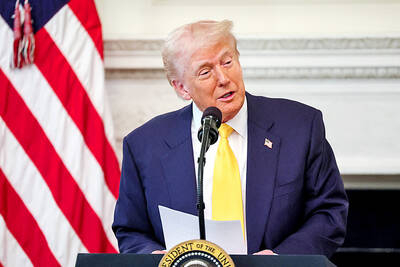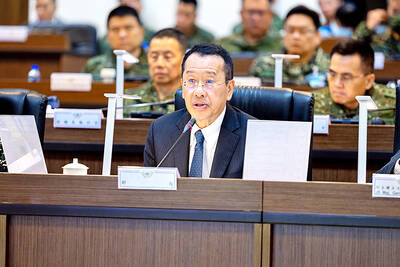The US dollar advanced to a seven-week high against the yen and gained versus the euro for the first week in almost a month as US employers eliminated fewer jobs last month than economists forecast.
The yen dropped against all of its major counterparts this week and fell to the lowest level against the euro since June as the Labor Department’s payroll report encouraged Japanese investors to buy higher-yielding assets overseas. Treasury 10-year yields posted their biggest weekly increase since 2003, making US assets more attractive to international investors.
“The recovery is setting in relatively quickly,” said Ulrich Leuchtmann, head of currency strategy at Commerzbank AG in Frankfurt. “It’s positive for the dollar in the long term because when the economy recovers it’ll be clear that the US is coming out of the crisis better.”
The dollar climbed 3.1 percent to ¥97.57, from ¥94.68 on July 31. It touched ¥97.79 on Friday, the highest level since June 16.
The US currency appreciated 0.5 percent to US$1.4183 per euro, the first weekly advance since the five-day period ended July 10. The euro appreciated 2.5 percent to ¥138.41, from ¥134.99 a week earlier. It reached ¥138.72 on Friday, the highest level since June 5.
The pound dropped 0.2 percent to US$1.6684 this week as the Bank of England increased its asset-purchase plan by £50 billion (US$84 billion) on concern the recession is deeper than previously anticipated. Sterling reached US$1.7043 on Wednesday, the highest level since Oct. 21.
The yen declined 5.5 percent this week to ¥53.52 versus the Brazilian real and weakened 5 percent to ¥7.54 versus the Mexican peso on speculation investors will buy assets sensitive to global growth. Japan’s 0.1 percent target lending rate compares with 8.75 percent in Brazil and 4.5 percent in Mexico.
Asian currencies rose this week, led by the Malaysian ringgit and the Philippine peso, as signs a global economic recovery is gathering pace bolstered demand for emerging-market assets.
The ringgit reached a two-month high against the dollar and the peso had its best week since May after reports showed manufacturing picked up last month in the US, Europe and China.
Indonesia’s rupiah climbed to its strongest level in nine months before paring gains amid concern the central bank will combat appreciation to support exporters.
The ringgit climbed 0.3 percent this week to 3.5065 per dollar in Kuala Lumpur, according to data compiled by Bloomberg.
The Malaysian currency reached 3.4840 on Wednesday, the highest since June 3.
The peso advanced 0.7 percent to 47.755 and the rupiah was little changed at 9,965. The Indonesian currency reached 9,850 on Tuesday, its strongest level since October.
The New Taiwan dollar gained 0.1 percent this week to NT$32.792 versus the greenback, while the won rose 0.3 percent to 1,224.90 and the Singapore dollar rose 0.2 percent to S$1.4373. The Thai baht traded at 33.94 compared with 34.01 last Friday.

STILL COMMITTED: The US opposes any forced change to the ‘status quo’ in the Strait, but also does not seek conflict, US Secretary of State Marco Rubio said US President Donald Trump’s administration released US$5.3 billion in previously frozen foreign aid, including US$870 million in security exemptions for programs in Taiwan, a list of exemptions reviewed by Reuters showed. Trump ordered a 90-day pause on foreign aid shortly after taking office on Jan. 20, halting funding for everything from programs that fight starvation and deadly diseases to providing shelters for millions of displaced people across the globe. US Secretary of State Marco Rubio, who has said that all foreign assistance must align with Trump’s “America First” priorities, issued waivers late last month on military aid to Israel and Egypt, the

‘UNITED FRONT’ FRONTS: Barring contact with Huaqiao and Jinan universities is needed to stop China targeting Taiwanese students, the education minister said Taiwan has blacklisted two Chinese universities from conducting academic exchange programs in the nation after reports that the institutes are arms of Beijing’s United Front Work Department, Minister of Education Cheng Ying-yao (鄭英耀) said in an exclusive interview with the Chinese-language Liberty Times (the Taipei Times’ sister paper) published yesterday. China’s Huaqiao University in Xiamen and Quanzhou, as well as Jinan University in Guangzhou, which have 600 and 1,500 Taiwanese on their rolls respectively, are under direct control of the Chinese government’s political warfare branch, Cheng said, citing reports by national security officials. A comprehensive ban on Taiwanese institutions collaborating or

France’s nuclear-powered aircraft carrier and accompanying warships were in the Philippines yesterday after holding combat drills with Philippine forces in the disputed South China Sea in a show of firepower that would likely antagonize China. The Charles de Gaulle on Friday docked at Subic Bay, a former US naval base northwest of Manila, for a break after more than two months of deployment in the Indo-Pacific region. The French carrier engaged with security allies for contingency readiness and to promote regional security, including with Philippine forces, navy ships and fighter jets. They held anti-submarine warfare drills and aerial combat training on Friday in

COMBAT READINESS: The military is reviewing weaponry, personnel resources, and mobilization and recovery forces to adjust defense strategies, the defense minister said The military has released a photograph of Minister of National Defense Wellington Koo (顧立雄) appearing to sit beside a US general during the annual Han Kuang military exercises on Friday last week in a historic first. In the photo, Koo, who was presiding over the drills with high-level officers, appears to be sitting next to US Marine Corps Major General Jay Bargeron, the director of strategic planning and policy of the US Indo-Pacific Command, although only Bargeron’s name tag is visible in the seat as “J5 Maj General.” It is the first time the military has released a photo of an active